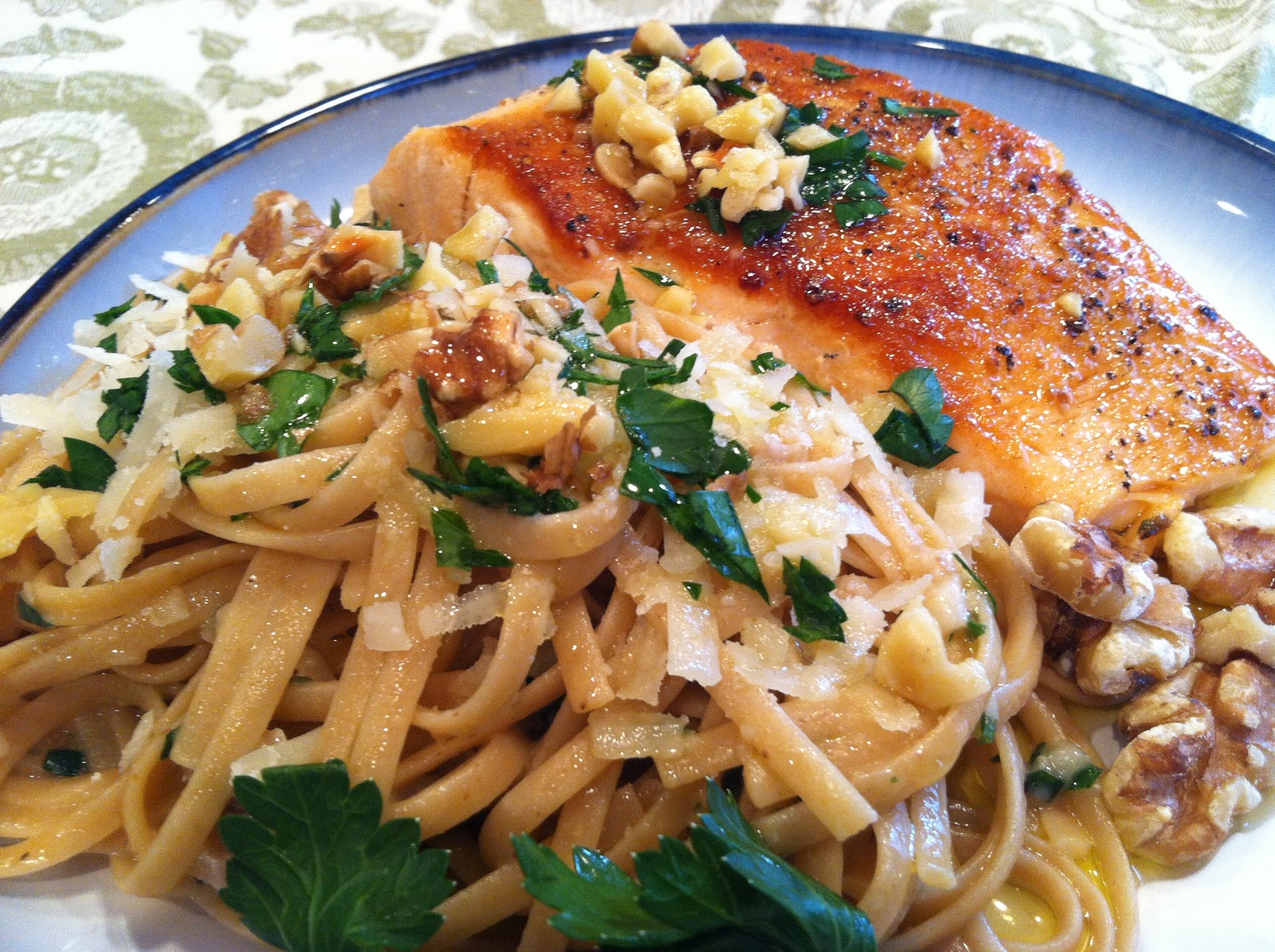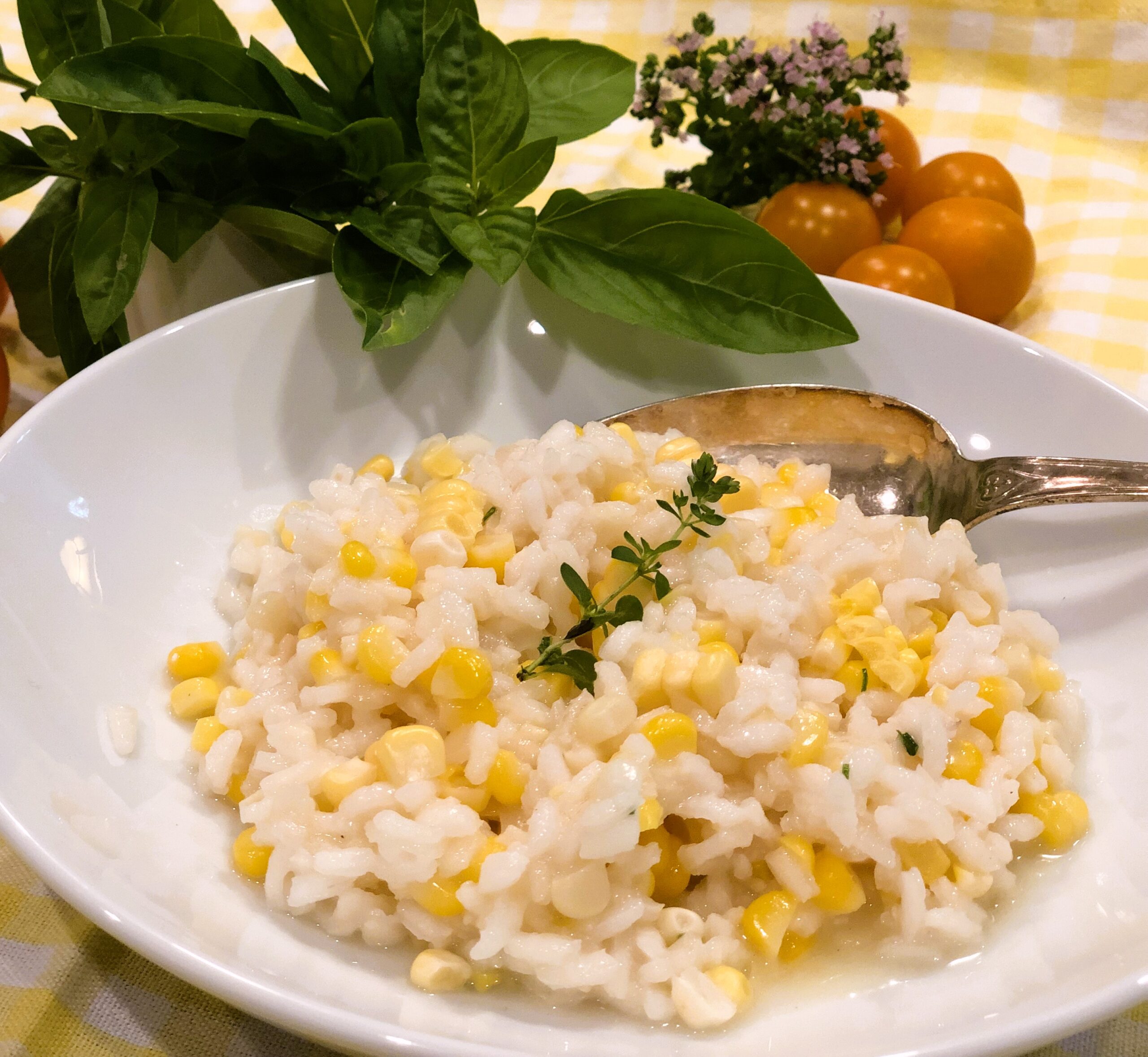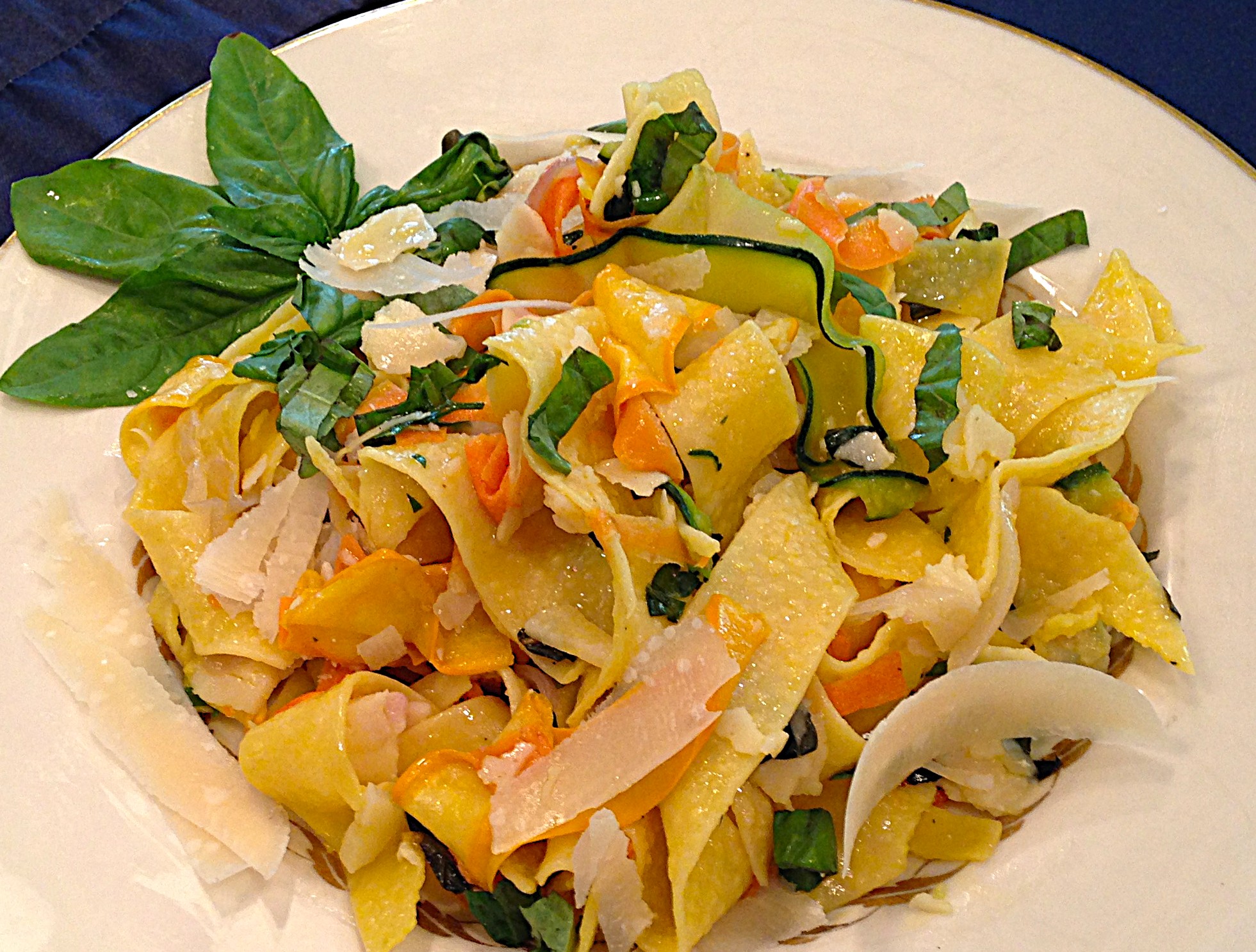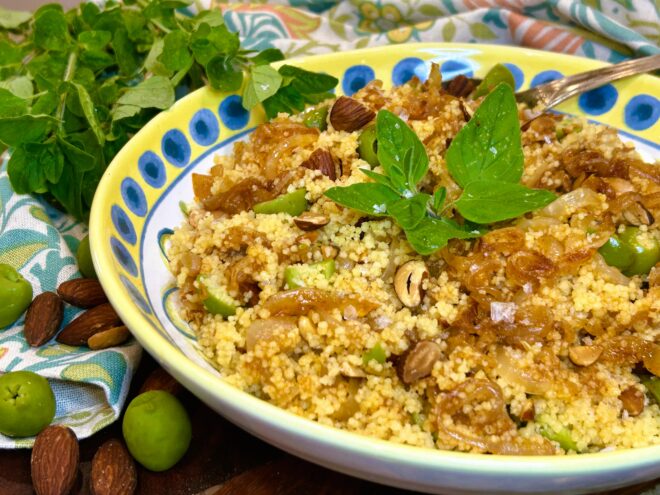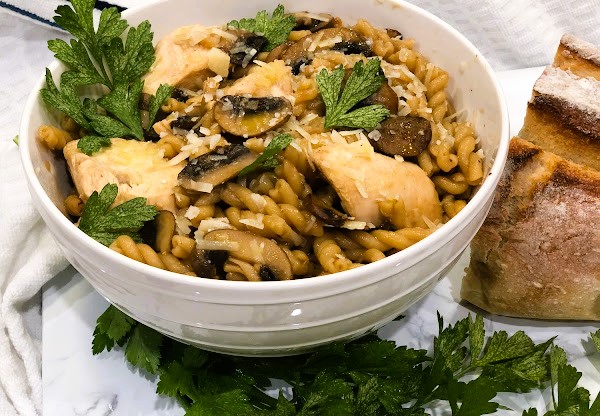Friday dinners are transitional meals. Making something wonderful to share with family transitions from the stresses of everyday work into the relaxation of the weekend. Sipping on a glass of wine helps too! Friday dinners need to be quick-cooking, uncomplicated, kind of fun, and delicious. This parsley-walnut pasta meets every bit of that. And it comes together in minutes. Paired here with seared salmon, but also great served with seared boneless chicken breast.
- 12 ounces fettuccine pasta
- 2/3 cups chopped walnuts, toasted
- 5 tablespoons olive oil, divided
- 3 cloves garlic, minced
- 1/2 cup unsalted chicken stock
- 1/2 cup chopped parsley
- 1 teaspoon kosher salt
- 1/4 teaspoon black pepper
- 3/4 cup grated Parmesan cheese
- 1/4 cup of reserved pasta water
Preheat oven to 350 degrees. Place the walnuts in a pie pan. Roast for 5-7 minutes. Remove and set aside to cool. Once cool, chop into medium size pieces. Cook the pasta according to package directions, reserve 1/4 cup of pasta water before draining into a colander. Set aside.
Using the same pan the pasta was cooked in, heat 3 tablespoons of olive oil over medium heat. Add the minced garlic cooking for 1 minute. Add the chicken broth, chopped parsley, chopped walnuts, salt and pepper cooking for 2-3 minutes. Add the pasta back to the pan, stirring to combine, heating it through for a few minutes. Turn off the heat, stir in the Parmesan cheese. Stir in 2 tablespoons of the reserved pasta water to yield a creamy texture, adding more as necessary. Drizzle with the remaining olive oil. Serve hot garnishing with additional cheese if desired.
Featured Market Ingredients
Carfagna’s Olive Oil
Fettuccini Pasta
Fresh Parsley
Parmigiano Reggiano Cheese

